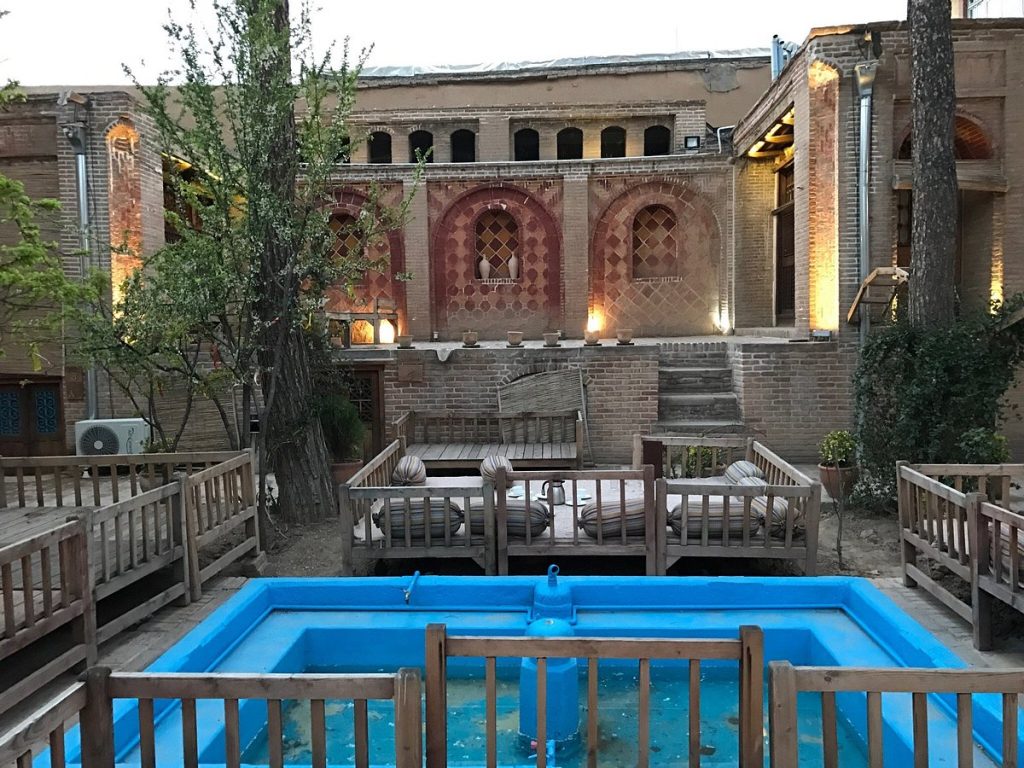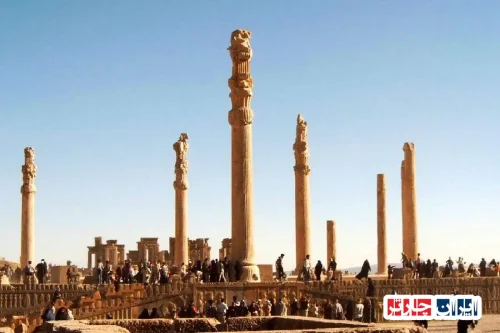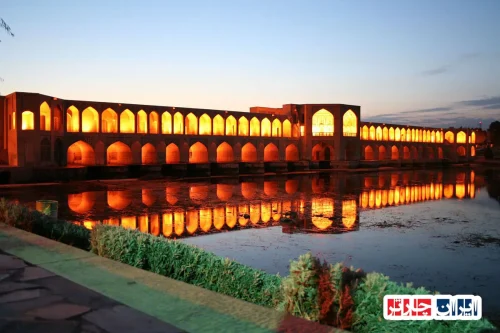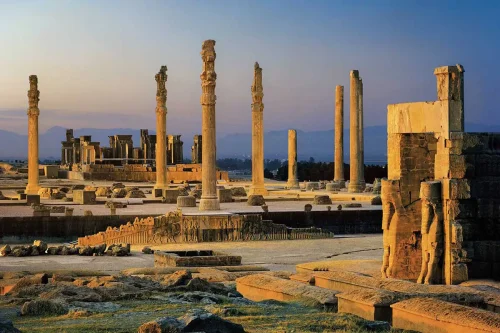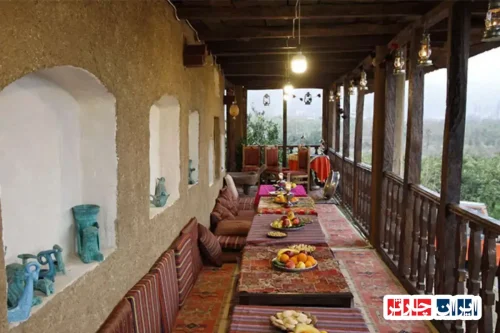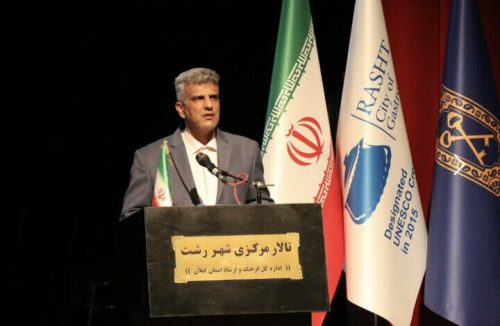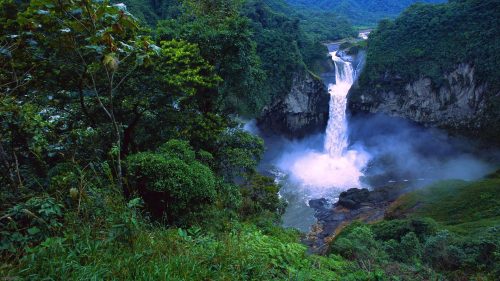Evaluating Cohesive Sustainable Eco Tourism Criteria for Lodgings: A Holistic Approach
In today’s interconnected world, where the preservation of natural resources and cultural heritage plays an increasingly vital role, Evaluating Cohesive Sustainable Eco Tourism Criteria for Lodgings has become a cornerstone for guiding responsible travel and environmentally respectful accommodations. This comprehensive evaluation is not merely about assessing the physical structures that host travelers but involves a multidimensional analysis that harmonizes ecological conservation, social responsibility, and economic sustainability. By considering a broad spectrum of parameters—from energy efficiency and waste management to community engagement and the preservation of local traditions—this approach provides a framework that encourages stakeholders to adopt innovative practices, ensuring that tourism benefits both visitors and host communities in an equitable manner. Evaluating Cohesive Sustainable Eco Tourism Criteria for Lodgings seeks to establish a set of benchmarks that ensure lodgings are constructed and maintained in an environmentally friendly way. This means utilizing renewable energy sources, reducing water consumption, and implementing efficient waste recycling systems. In turn, these practices help minimize the negative impact on local ecosystems and contribute to the global effort of mitigating climate change. Lodgings that meet these criteria also often integrate local materials and labor, thereby reinforcing community-based tourism and preserving indigenous craftsmanship. The concept is built on the idea that the environment, society, and economy are interconnected, and any sustainable development strategy must address all these aspects simultaneously. Moreover, Evaluating Cohesive Sustainable Eco Tourism Criteria for Lodgings involves a careful assessment of design and operational practices that promote minimal environmental disruption. Accommodations are evaluated based on their location, architectural design that blends with the natural scenery, and the use of non-toxic building materials that avoid detrimental emissions. Such lodgings are usually designed to reduce their carbon footprint while simultaneously providing guests with an authentic and immersive experience. The emphasis on sustainability encourages operators to periodically reassess and upgrade their facilities, ensuring that they adhere to both evolving environmental standards and the expectations of an increasingly conscientious global travel community. Another critical component of Evaluating Cohesive Sustainable Eco Tourism Criteria for Lodgings is the emphasis on guest education and involvement. Lodgings that excel in fulfilling these criteria often provide informational resources and hands-on experiences that enable visitors to understand the local ecosystem and cultural dynamics. Educational workshops, guided tours, and interactive sessions not only enrich the travel experience but also foster a sense of shared responsibility among tourists. This interactive approach builds a bridge between visitors and local communities, ensuring that the benefits of tourism are felt more deeply and broadly. As travelers become more aware of the environmental and social implications of their choices, their preferences shift towards options that offer both comfort and conscious living. Sustainable lodgings adhering to these criteria typically set up monitoring systems to track their resource consumption and environmental impact, using technology and data analytics to continually improve their operations. The process of Evaluating Cohesive Sustainable Eco Tourism Criteria for Lodgings involves regular audits and feedback loops that help operators identify areas of improvement. Such evaluations are integral to fostering trust among stakeholders, including local residents, environmental groups, and tourists themselves. Transparent reporting and community engagement further cement the credibility of these lodgings, as they demonstrate a tangible commitment to ethical tourism practices and long-term sustainability goals. An equally important aspect is the economic model underlying these lodgings. By reducing operational costs through energy conservation measures, waste reduction, and local sourcing of products, sustainable accommodations often attain a competitive edge in the tourism market. Evaluating Cohesive Sustainable Eco Tourism Criteria for Lodgings does not only contribute to environmental conservation but also supports the local economies by creating jobs and encouraging entrepreneurship. The reinvestment of profits into community projects and environmental initiatives ensures that the benefits of tourism are distributed fairly and contribute to the overall well-being of the region. Furthermore, the strategic framework of Evaluating Cohesive Sustainable Eco Tourism Criteria for Lodgings inspires operators to adopt a long-term perspective that champions resilience against environmental and economic challenges. Lodgings that have integrated sustainable practices are often better prepared to adapt to fluctuations in tourism demand and can maintain high standards even during periods of instability. This resilience is a testament to the underlying philosophy that responsible stewardship of natural resources and cultural heritage is not only morally imperative but also economically sound. As global travel continues to evolve, the adoption of these criteria will increasingly influence policymaking and industry standards, setting a benchmark that inspires further innovations in sustainable tourism. The integration of cutting-edge technology with traditional sustainable practices has added a new dimension to Evaluating Cohesive Sustainable Eco Tourism Criteria for Lodgings. Innovations such as smart energy management systems, real-time environmental monitoring, and advanced water purification techniques have revolutionized the way accommodations operate. These technological advancements empower operators to proactively manage their resources and minimize waste, reinforcing the commitment to a green future. Furthermore, by embracing digital platforms and social media, many sustainable lodgings are now able to effectively communicate their eco-friendly practices and success stories, attracting a wider audience who value environmental responsibility alongside quality service. In addition to the operational and technological aspects, the cultural significance of sustainable tourism cannot be overlooked. Evaluating Cohesive Sustainable Eco Tourism Criteria for Lodgings enriches the travel experience by ensuring that accommodations respect and celebrate local customs and traditions. This approach not only preserves cultural heritage but also invites travelers to engage with authentic local experiences, fostering mutual understanding and respect. The integration of cultural sensitivity with ecological awareness provides a comprehensive blueprint for tourism that nurtures both the natural environment and the human spirit. Ultimately, Evaluating Cohesive Sustainable Eco Tourism Criteria for Lodgings represents a paradigm shift in how the tourism industry approaches accommodation management and development. By marrying environmental stewardship with socio-economic progress and cultural preservation, this framework sets the stage for a new era of responsible travel. It calls on all stakeholders—operators, travelers, local governments, and communities—to collaborate in creating a tourism model that drives sustainable development. As the challenges posed by climate change and over-tourism intensify, such holistic evaluations become not just beneficial, but essential in ensuring that future generations inherit a world where nature and culture thrive in tandem. The comprehensive adoption of these criteria is poised to transform the tourism landscape. Operators who diligently implement sustainable practices are rewarded with heightened credibility, guest loyalty, and long-term cost benefits, while contributing to a more balanced ecological and social environment. Evaluating Cohesive Sustainable Eco Tourism Criteria for Lodgings thereby not only elevates the standard of travel accommodations but also acts as a catalyst for broader societal change—where every stay is a step closer to a sustainable future and every traveler becomes a guardian of the environment. The commitment to these principles is a reaffirmation that innovation, responsibility, and respect for nature can converge to create experiences that are as enriching as they are preservative of our planet’s invaluable resources.
sustainable tourism-Iran Charter
sustainable tourism-Iran Charter
sustainable tourism-Iran Charter
Evaluating Cohesive Sustainable Eco Tourism Criteria for Lodgings: The Role of Sustainable Tourism in Job Creation and Economic Development
Sustainable tourism has emerged as an essential driver in stimulating local economies and generating employment opportunities. By integrating the principles behind Evaluating Cohesive Sustainable Eco Tourism Criteria for Lodgings, communities can cultivate practices that rely on renewable energy, efficient waste management, and resource conservation. This model not only nurtures job creation in areas such as hospitality, local crafts, and guiding services but also empowers residents through capacity building and skills training. In many regions, eco-friendly lodgings have become catalysts for attracting diverse investments that spur economic growth while maintaining respect for cultural heritage and natural resources. The overall strategy emphasizes a balanced approach where environmental sustainability and economic progress work hand in hand, ensuring that every tourism initiative benefits both the guests and local communities simultaneously.
Evaluating Cohesive Sustainable Eco Tourism Criteria for Lodgings: Innovative Investment Approaches Through Comprehensive Feasibility Studies
One of the cornerstones of successful sustainable tourism projects lies in the meticulous design and execution of comprehensive feasibility studies. In alignment with Evaluating Cohesive Sustainable Eco Tourism Criteria for Lodgings, these studies delve into multiple dimensions of project planning—from initial capital expenditures and operational forecasts to in-depth risk assessments and sustainability metrics. Investors gain confidence through detailed documentation that outlines the use of local materials, renewable energy sources, and eco-friendly construction methods. By blending modern technology with indigenous practices, feasibility studies not only attract funding but also pave the way for innovative investment in eco-friendly infrastructure. This integrated approach ultimately creates a robust investment framework, ensuring that sustainable projects are both profitable and environmentally responsible.
Evaluating Cohesive Sustainable Eco Tourism Criteria for Lodgings: Successful Cases of Eco-Camps in Natural Settings
Across various natural landscapes, successful eco-camps have demonstrated the transformative potential of sustainable tourism. Guided by Evaluating Cohesive Sustainable Eco Tourism Criteria for Lodgings, these projects utilize environmentally sensitive designs, renewable energy, and low-impact building materials to harmonize with the surrounding ecosystem. Eco-camps offer unique guest experiences by providing opportunities for immersive encounters with nature while simultaneously respecting local traditions and cultures. The success stories of these camps are underpinned by strong community engagement and an unwavering commitment to conservation. Such projects not only serve as live examples of sustainable accommodations but also inspire further innovations that blend traditional aesthetics with modern environmentally conscious practices.
Evaluating Cohesive Sustainable Eco Tourism Criteria for Lodgings: Key Steps in Obtaining Permits and Support for Sustainable Tourism Projects
The pathway to launching sustainable tourism projects often hinges on a series of well-coordinated administrative and legal procedures. In reference to Evaluating Cohesive Sustainable Eco Tourism Criteria for Lodgings, project developers are encouraged to engage early with regulatory bodies to understand environmental impact assessments, building codes, and permit requirements. Detailed planning that incorporates eco-friendly construction methods and community engagement strategies facilitates smoother approval processes. By demonstrating adherence to high standards of ecological and social responsibility, developers can secure the necessary permits and institutional support. This diligent approach ensures that all aspects of the project—from design to implementation—are aligned with both legal requirements and sustainability objectives.
Evaluating Cohesive Sustainable Eco Tourism Criteria for Lodgings: Leveraging Natural Resources and Cutting-Edge Technologies for Sustainable Development
Harnessing the full potential of natural resources and modern technology is fundamental in realizing truly sustainable tourism ventures. With the framework provided by Evaluating Cohesive Sustainable Eco Tourism Criteria for Lodgings, operators integrate advanced energy management systems, water recycling technologies, and smart resource monitoring tools to lower environmental impact. The adoption of innovative technologies such as solar panels, rainwater harvesting systems, and energy efficient building designs not only reduces operational costs but also exemplifies best practices in environmental stewardship. This synergy between natural resource management and technology builds a resilient model for sustainable development, ensuring that each lodging project contributes positively to the local ecology while setting a benchmark for industry standards.
Evaluating Cohesive Sustainable Eco Tourism Criteria for Lodgings: Enhancing Service Quality and Tourist Experiences Through Sustainable Practices
Guest satisfaction and exceptional service quality are at the heart of a successful sustainable lodging initiative. By embracing Evaluating Cohesive Sustainable Eco Tourism Criteria for Lodgings, tourism operators invest in designing experiences that blend comfort with environmental and cultural sensitivity. The integration of eco-friendly facilities, organic dining options, and culturally immersive activities enriches the overall visitor experience. Sustainable practices such as energy conservation, waste reduction, and community-based tourism not only enhance operational efficiency but also create memorable experiences that foster loyalty and positive word-of-mouth recommendations. As travelers grow increasingly aware of the global need for eco-conscious travel, these quality enhancements elevate the standard of sustainable tourism worldwide.
Evaluating Cohesive Sustainable Eco Tourism Criteria for Lodgings: Creating Robust Infrastructure and Optimizing Resource Management in Tourism
The success of sustainable tourism is heavily dependent on the establishment of robust infrastructure and effective resource management. Following the guidelines of Evaluating Cohesive Sustainable Eco Tourism Criteria for Lodgings, developers focus on creating functional designs that provide a seamless blend of modern amenities with minimal ecological disruption. This involves strategic planning in urban design, energy allocation, and water resource management to ensure optimal operational performance. Innovative construction techniques that minimize waste and harness natural cooling and lighting systems illustrate a commitment to long-term sustainability. With smart management systems in place, these projects can continuously monitor performance and adapt to environmental changes, thereby optimizing resource use while catering to high service standards.
Evaluating Cohesive Sustainable Eco Tourism Criteria for Lodgings: Fostering Connections Between Tourists and Local Communities
Establishing strong, mutually beneficial relationships between tourists and local communities is a vital component of sustainable tourism. By adopting the Evaluating Cohesive Sustainable Eco Tourism Criteria for Lodgings framework, operators encourage cultural exchanges and collaborative engagements that benefit both visitors and residents. Programs that facilitate local tours, artisan workshops, and community events help visitors gain a deeper understanding of regional heritage while providing economic benefits to locals. This connection not only enriches the guest experience but also fosters a sense of shared responsibility for environmental preservation and cultural continuity. Such community-centric practices are instrumental in creating tourism models that resonate on social, economic, and environmental levels.
Evaluating Cohesive Sustainable Eco Tourism Criteria for Lodgings: A Vision for Balancing Economic, Social, and Environmental Prosperity in Tourism
Looking to the future, the integration of sustainable practices in tourism promises a transformative impact on the global travel landscape. Evaluating Cohesive Sustainable Eco Tourism Criteria for Lodgings offers a visionary framework that seeks to balance economic growth, social equity, and environmental protection. This holistic approach inspires stakeholders—from accommodation providers to local governments—to invest in initiatives that not only generate revenue but also enhance community welfare and preserve natural habitats. The long-term benefits of this balanced model are evident in improved quality of life, resilient local economies, and the conservation of priceless cultural and environmental assets. By championing a development model that harmonizes diverse interests, the tourism sector can pave the way for a prosperous and sustainable future for all.
Frequently Asked Questions
- What is a feasibility study for establishing an eco-camp tourism project?
- A feasibility study is a comprehensive analysis of technical, economic, and environmental factors that outlines the process of establishing a sustainable eco-camp tourism project.
- What are the main objectives of an eco-camp tourism project?
- The primary objectives include attracting tourists, generating revenue, preserving the environment, and promoting rural development through sustainable accommodations.
- What types of eco-camp tourism projects exist?
- Eco-camp tourism projects can include forest camps, desert camps, nature exploration camps, nomadic-style camps, traditional houses, geodesic domes, wooden cabins, and integrated tourist complexes.
- What are the benefits of providing a feasibility plan to banks?
- A well-prepared feasibility plan demonstrates financial stability, repayment capacity, and project profitability, which can make banks more willing to offer favorable loans.
- What are the steps to obtain a permit for an eco-camp tourism project?
- The process involves submitting the required documents, having the feasibility study reviewed by the appropriate authorities, paying applicable fees, and finally obtaining the necessary permits.
- How are startup costs estimated for an eco-camp tourism project?
- Costs are estimated based on land purchase, construction, equipment procurement, installation of sustainable systems, and ongoing operational expenses, all determined through detailed studies.
- How does an eco-camp contribute to environmental preservation?
- Eco-camps use natural materials, renewable energy sources, and rainwater harvesting while adhering to sustainable practices, significantly reducing environmental impact.
- What is the role of the project team in the success of an eco-camp tourism project?
- A skilled team—including management, environmental experts, health professionals, and tourism specialists—is essential for planning, execution, and delivering quality guest experiences.
- Is an eco-camp tourism business profitable?
- With the rising trend in sustainable tourism and unique nature experiences, eco-camp businesses offer significant revenue potential and profitability.
- How can you prepare an effective feasibility study for an eco-camp?
- An effective feasibility study is prepared by conducting thorough market research, selecting a suitable location, accurately estimating costs, and including in-depth technical and economic analyses.
- What factors are important for attracting tourists to an eco-camp?
- Key factors include well-designed and comfortable accommodations, diverse recreational and cultural activities, excellent service, and a strong focus on sustainability.
- How does the use of natural resources impact eco-camp tourism?
- Efficient use of natural resources such as water, soil, and renewable energy not only reduces operational costs but also enhances the overall environmental appeal of the eco-camp.
- How does a feasibility study help secure bank loans?
- By clearly presenting financial and economic data, a feasibility study builds confidence in the project’s repayment and profit potential, helping secure favorable loan terms.
- What criteria should be considered when selecting a location for an eco-camp?
- The location should offer access to scenic natural landscapes, water resources, essential infrastructure, and an environmental setting that complements sustainable tourism.
- How can you enhance the tourist experience in an eco-camp?
- Enhancing the tourist experience involves providing diverse recreational and educational activities, delivering high-quality service, and creating a warm, inviting atmosphere.
- What role do advanced technologies play in managing an eco-camp tourism project?
- Advanced technologies improve management processes, streamline customer communication, and enable online service delivery, contributing to enhanced operational efficiency and guest satisfaction.
- How is an environmentally friendly design implemented in an eco-camp?
- An eco-friendly design is achieved using local materials, installing rainwater collection systems, employing renewable energy sources, and integrating architectural elements that blend with nature.
- How does eco-tourism contribute to sustainable development?
- Eco-tourism promotes sustainable development by raising environmental awareness, supporting local communities, and conserving natural resources while providing a unique tourism experience.

